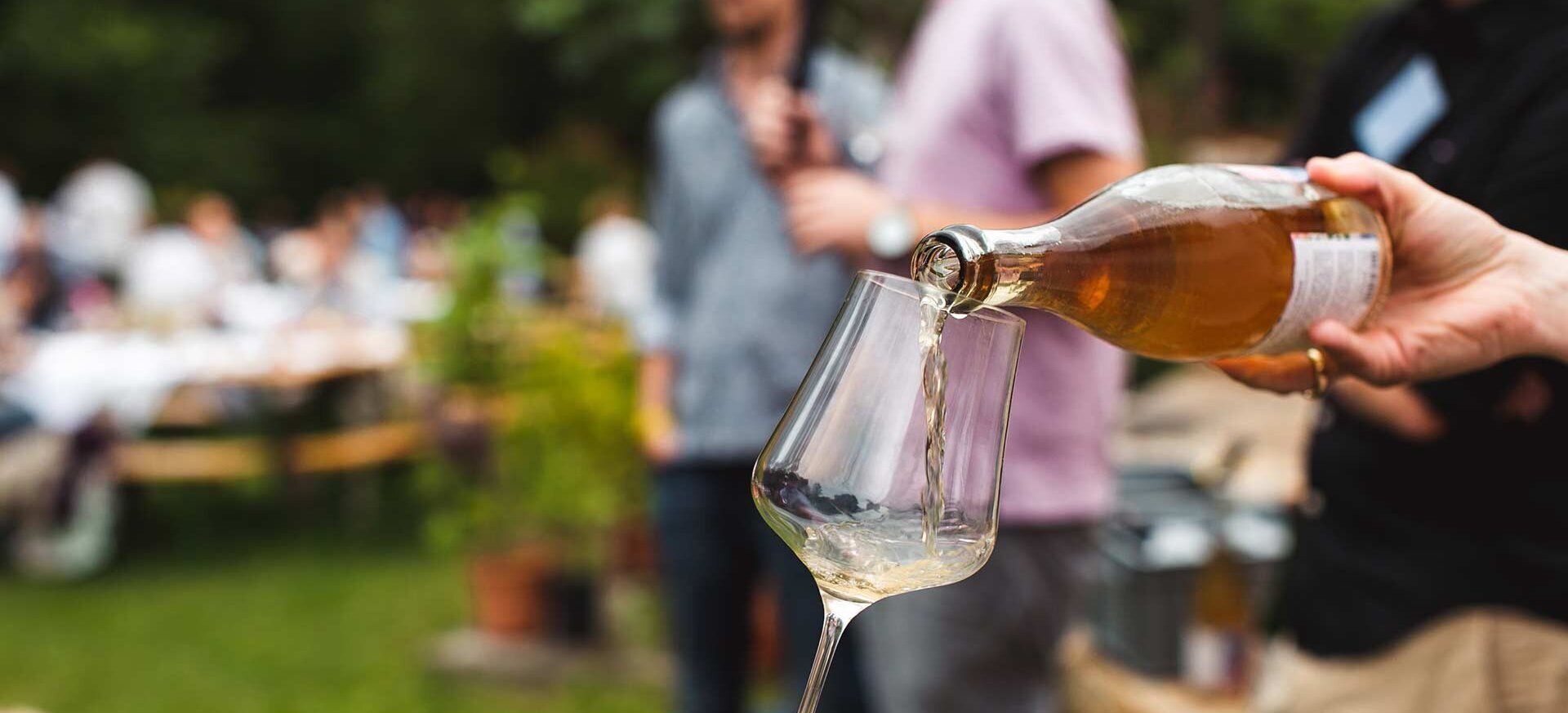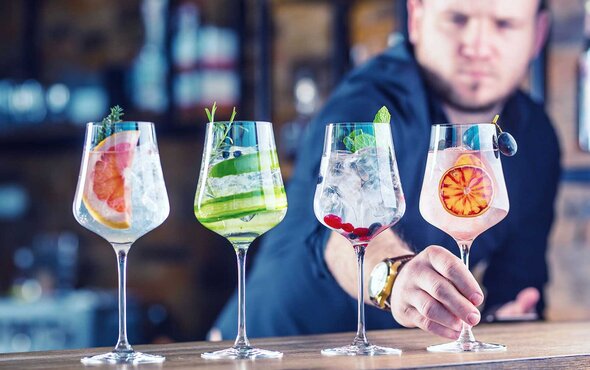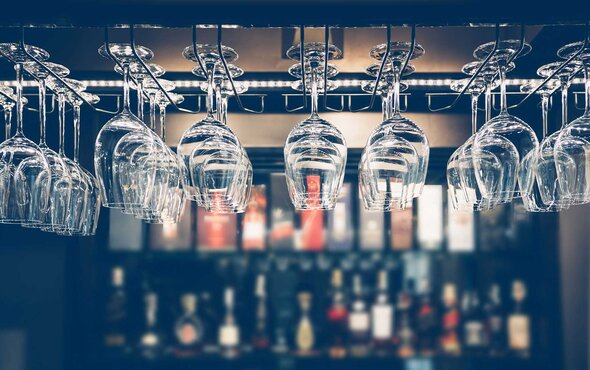"This is how wine taster René Gabriel felt over ten years ago. No glass could both meet his expectations and be used across the board. So, he just designed his own ‘trappings’: the Gabriel Glass. The glass that does everything.
He believes a wine glass should help the wine express its aroma, characteristics and body—that is what makes an ideal glass. So, he started seriously thinking about the ‘trappings,’ sketching ideas and talking to professional glass designers. The result was a medium-sized, classy wine glass, equally ideal for enjoying any type of wine."


René Gabriel, inventor
ANY TYPE OF WINE, PERFECTLY BALANCED
While developing the universal glass, the entrepreneur worked by the mantra, ‘Rather a cellar full of wine than a cupboard full of glasses.’ This wonder glass is suited to sparkling and dessert wines, as well as standard red and white wines.
‘Any drink which develops aromas will do well in this glass,’ explains Alfred Herlbauer, managing director at Gabriel-Glas. Whiskies, brandies, beers—and especially champagnes—develop ideally.
But how does this glass pull off such a balancing act? Emphasising the good points of all wines? The secret lies in the bowl.
The bottom part of the bowl on the Gabriel Glass is a V shape which curves outwards slightly. Even with a small quantity of wine in the glass, this shape guarantees a maximum surface area exposed to the air, allowing the wine to breathe properly.
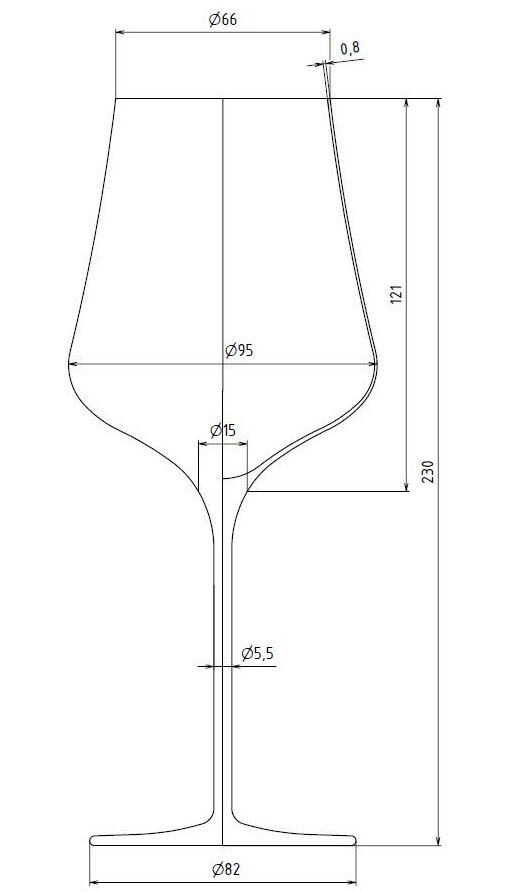
Width is key. The bowl of the glass measures 95 mm in diameter at its widest point. This produces a decanter effect inside the glass, encouraging ‘quick,’ somewhat fleeting aromas to disperse and ‘slower,’ more substantial aromas to develop. So is height at 90 mm, the distance to your mouth is perfect: not too close, not too far. That allows your nose to capture the full intensity and complexity of the aromas.
The rim measures 66 mm. Wide enough not to block the aromas and small enough not to allow them to escape. From the rim to the widest point, the bowl is a gently sloped conical shape, i.e. tapered, meaning that the aromas released in the glass are funnelled unimpeded into the nostrils.
Alfred Herlbauer, managing director at GABRIEL-GLAS GmbH

PROPER CARE FOR YOUR LIGHTWEIGHT GLASS
"The Gabriel Glass is available hand or machine blown. The crystal glass is lead free and produced using cutting edge technology. Our StandArt model is machine made and weighs 150 g. Our hand blown model (the Gold Edition) weighs just 90 g.
So how do you look after this delicate piece so that you can enjoy it for as long as possible?
‘Ideally, wash it in a dishwashing machine – if possible, a MEIKO machine with a reverse osmosis system. That will clean your glass with no need for polishing, ’ that is the expert advice offered by Alfred Herlbauer.
These thin-walled glasses are better suited to dishwashing machines than hand washing. A plastic rack will protect each glass from every angle. Glasses can easily fall over and crash against one another and break in metal racks with no dividers.
Dishwasher tabs should never be used as the detergent in this case. They aggressively attack grease and everything else. The ingredients attack surfaces, destroying glass and porcelain.
Glasses should be stored on a relatively open shelf. Closed cabinets cause moisture to build up on the surface of the glass, which then absorbs the odour of the cabinet."
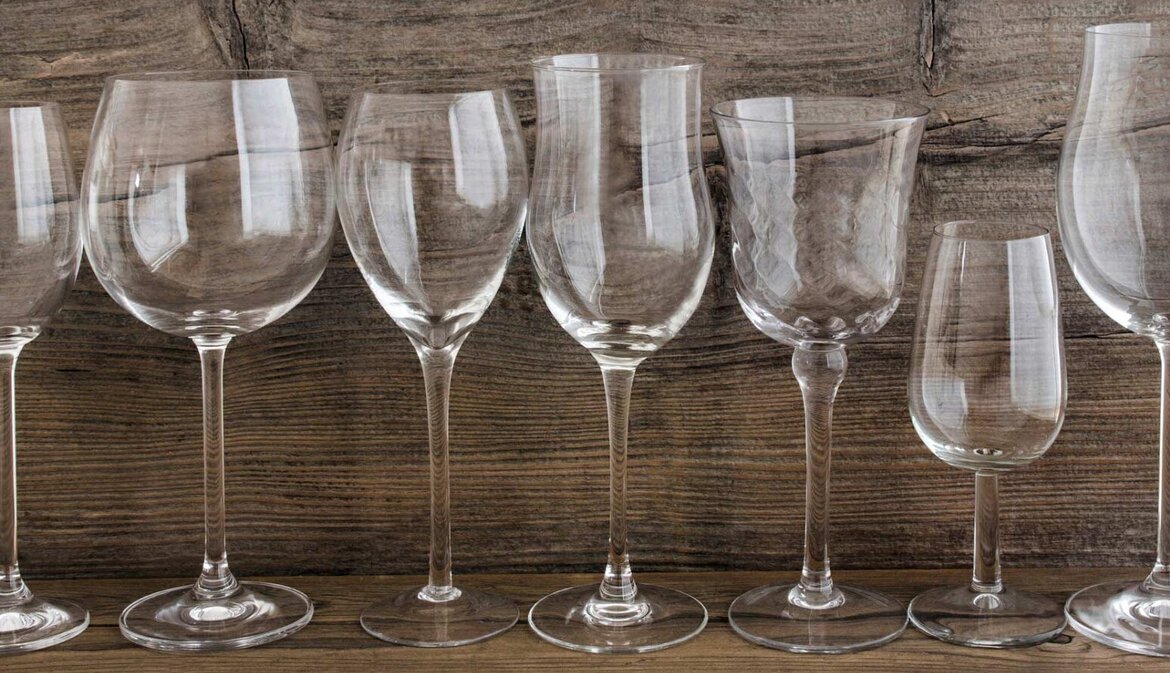
René Gabriel
FLUTES VERSUS THE UNIVERSAL GLASS
Is the universal glass for champagne, too?
Of course! The Gabriel Glass is ideally suited. Flutes often feature effervescent points on the bottom of the bowl to allow the carbon dioxide to rise quickly. Visually, it is quite the show! In terms of taste, though, the carbon dioxide becomes overwhelming, and the ‘zip’ quickly escapes the drink, which can often become dull and boring.
EFFERVESCENT POINT:
Etched points on the bottom of a sparkling wine or champagne glass, which vividly creates the rising of the bubbles enhancing the presentation of fizz.
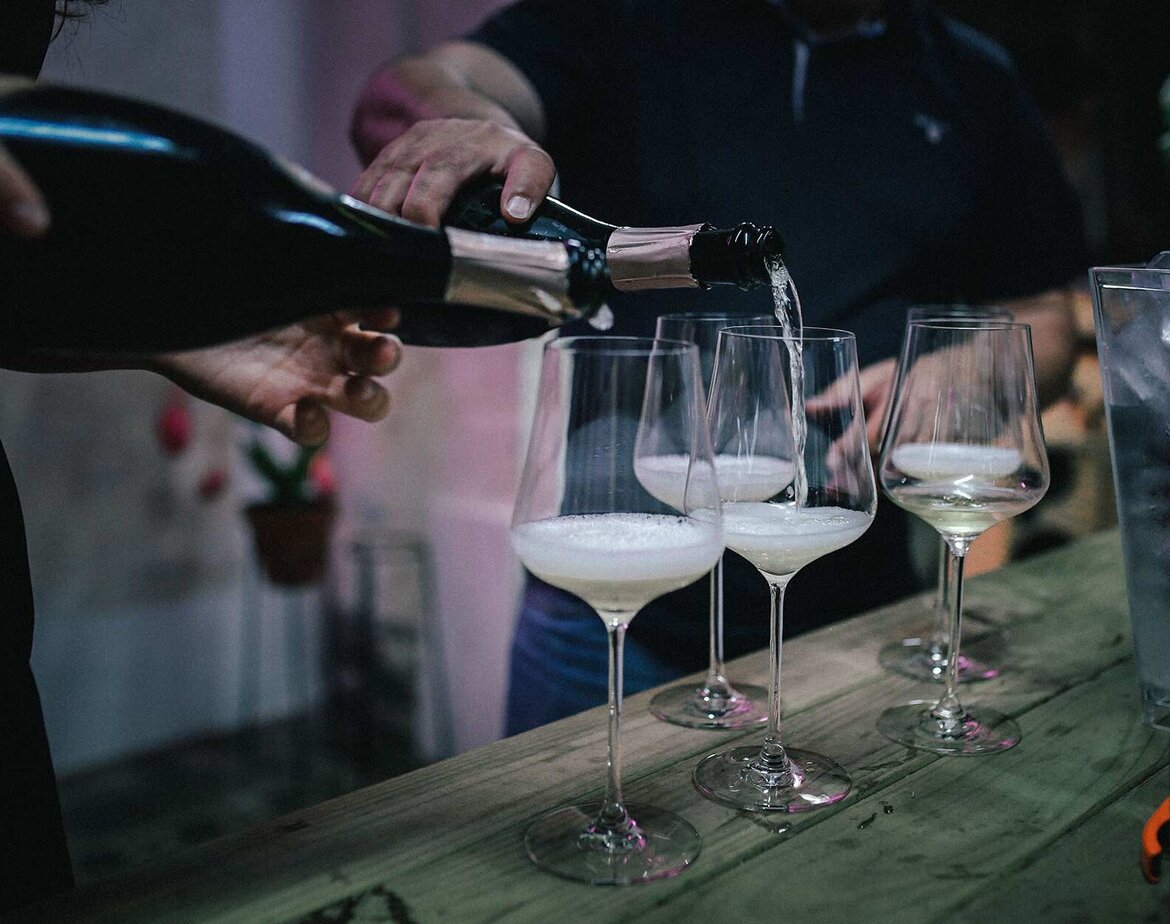
THE SECRET OF THE GABRIEL GLASS:
- An easy path for the aromas to reach your nose thanks to the wide base of the bowl.
- The perfect distance from the wine to the nose when drinking.
- Steady release of aromas through the wide rim.
WINE TASTING – LESS IS MORE
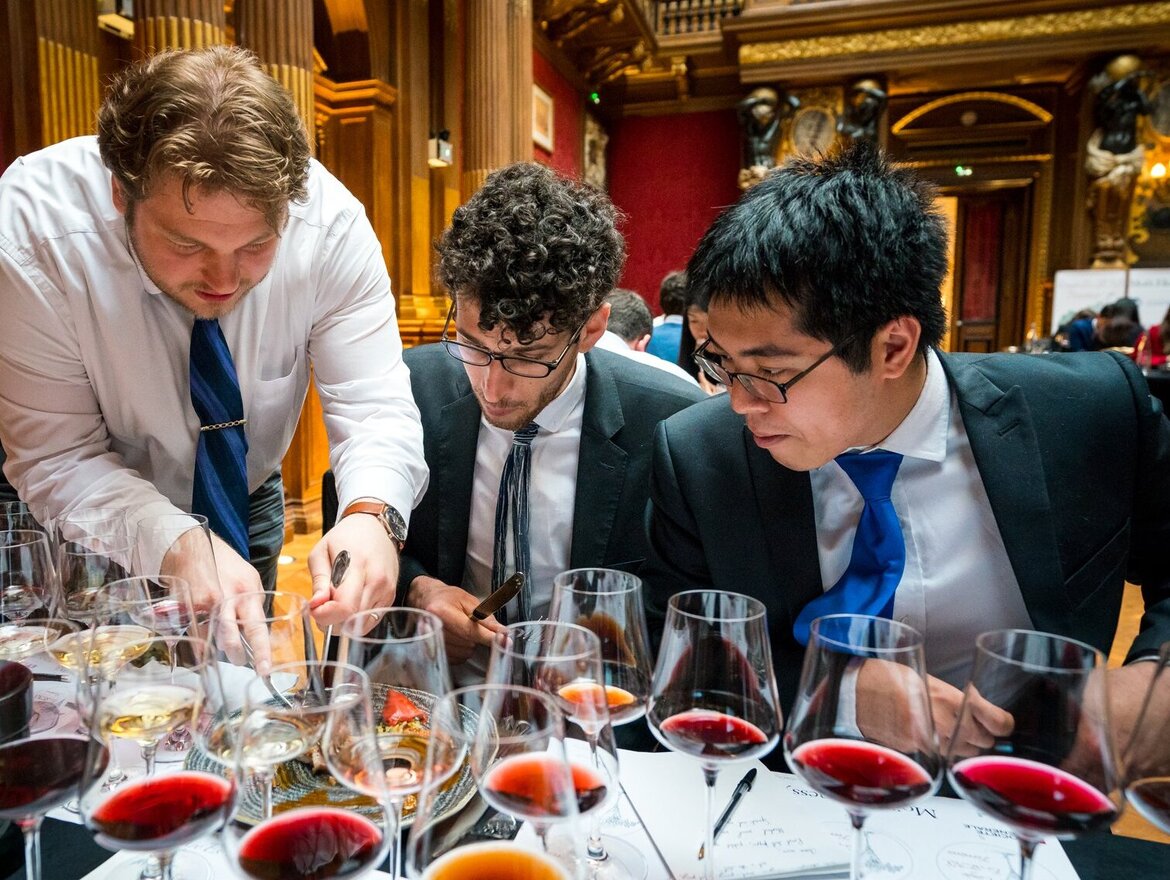
"Even vintners are choosing universal glasses for tasting sessions because of the flat base, meaning that even a small amount of wine has a large surface area. The distance to your mouth is ideal. Glass rims can be likened to roses: when partially open, they release their aromas but not when they are closed or totally open.
Vintners can serve all their wines in Gabriel Glasses, including Burgundy wines, which ought, theoretically, to be served in a larger glass to give them space to develop their aromas. Top chefs and private clients have long been convinced of the quality and versatility of these wine glasses. They are available in over 40 countries worldwide, bringing in sales in the millions for the company every year. Establishing a product on the market within such a short period is no mean feat. It must be a sign that the ‘trappings’ are right!"
